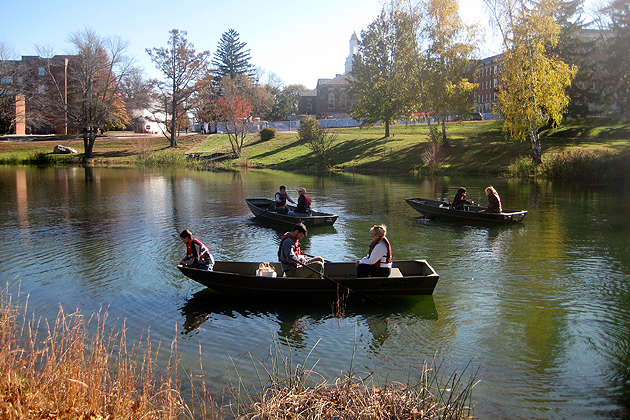







A Museum of Natural History program led by biology professor Mark Urban explored the microscopic and other species living in the waters of UConn's Swan Lake.

Led by ecology & evolutionary biology professor Mark Urban, a small group of participants spent the afternoon of Nov. 5 exploring aquatic life in UConn's Swan Lake.







